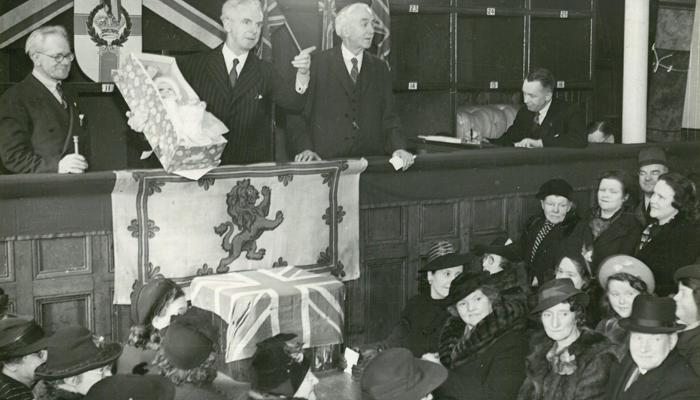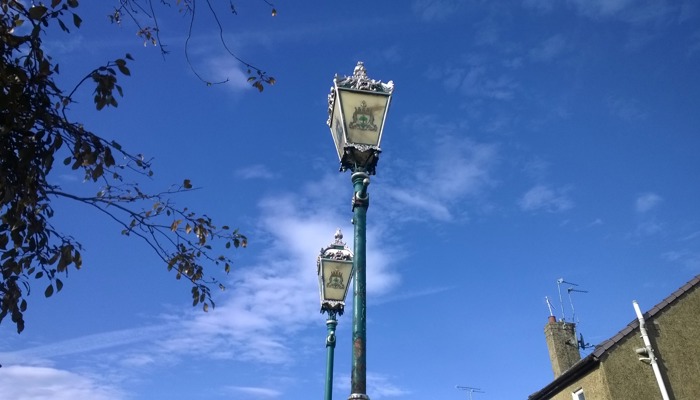
Ask the Archivist - Lord Provosts
Our next topic was the city's Lord Provosts. The Q&A is below. You can also read a feature about these records in the Glasgow Times.
Q1: What did the Lord Provost (LP) do?
The LP of Glasgow was (and still is) an ambassadorial role which encompassed many duties including hosting civic receptions. As the principal civic representative for the city, the LP was often the face of the city during times of turmoil and established various relief funds including one to support survivors of the Athenia disaster in 1939.
The post-holder was responsible for promoting Glasgow internationally and also acted as the Lord-Lieutenant of Glasgow. The LP hosted royal visits to the city and presented honours in the monarch’s name. The LP could also confer the Freedom of the City on a person: Nelson Mandela and Billy Connolly are previous recipients.
Q2: How do I research Glasgow’s LPs?
An excellent place to start is our marvellously-named Domesday Book of Glasgow which consists of biographical notes and obituaries of the city’s councillors. Covering 1890 – 1975, it includes retrospective information back to the 1850s. A list of previous provosts is on Glasgow City Council’s website.
Next, check out council minutes for the years the person was LP. Our records of the LP’s Office are also a rich resource. They include correspondence, press-cutting books, committee minutes, files on public events as well as photos of civic occasions. Some films presented to the LP are held on deposit at the Moving Image Archive.
As many LPs were merchants or business owners, it’s worth checking whether their personal or administrative papers have survived. For example, we hold the family trust volumes of Sir James Bain and the papers of Sir James King during his time in office.
Q3: Can you tell us about some notable provosts?
Here are a few from the hundreds who have held the title! Their years as provost are in brackets:
Robert Stewart (1851 – 1854) is commemorated by the Stewart Memorial Fountain in Kelvingrove Park which highlights his role in supplying Glasgow with water from Loch Katrine. Another similarly civic-minded LP was Sir Daniel Macaulay Stevenson (1911 – 1914) who left a bequest of £20,000 to Glasgow University to found the Chair of Citizenship.
In living memory, there’s Sir Patrick Dollan (1938 – 1941), the first person from an Irish Catholic background to hold the position. Dame Jean Roberts (1960 – 1963), a former teacher, was the first female Lord Provost. Many will also remember Pat Lally (1996 – 1999) whose long political career was characterised by a number of comebacks for which he was nicknamed Lazarus.
Several notable LPs are buried in the Necropolis. For example, there’s Sir William Collins (1877 – 1880), temperance movement activist and member of the Collins publishing family. Henry Monteith (1814 – 1816 & 1818 – 1820) is another. As LP, he oversaw the execution of James Wilson for treason in the Radical War of 1820. We hold some letters written to Monteith about the war as part of our LP’s Office records.
Q4: What are the shortest and longest appointments for a Glasgow LP?
The first provost of Glasgow, John Stewart, is also the longest-serving (some thirty years). Although others became provost several times, no one rivalled Stewart’s long service. Most provosts held the office for two or three years although some served only one year. As the exact dates for the earliest provosts are not available, it’s impossible to say for certain who held the shortest appointment. However, John Mains was LP for only three months (May – July 1972).
Q5: What are the Lord Provosts’ Lamp Posts?
As the LP had no official residence in Glasgow, it became a tradition to place a pair of lamp posts at their personal residence. This tradition used to be observed throughout Scotland and originated from the practice of lighting lamps at the homes of bailies (civic officials). The gas-lit lamps bore the burgh or city coat of arms and highlighted where people could find the bailies. The tradition evolved during the twentieth century when the lamps became powered by electricity and could be installed (without the posts!) above tenement doors or flatted properties. Some of these lamps can still be found throughout the city including pairs on Danes Drive in Scotstoun and Churchill Drive in Broomhill.
Lord Provosts


